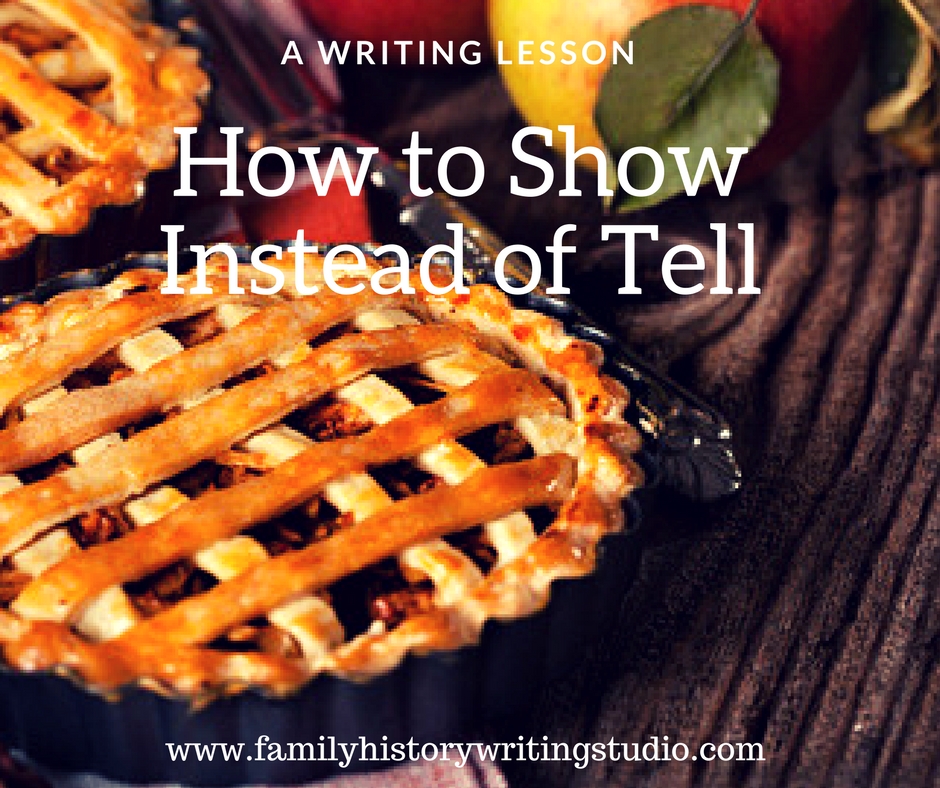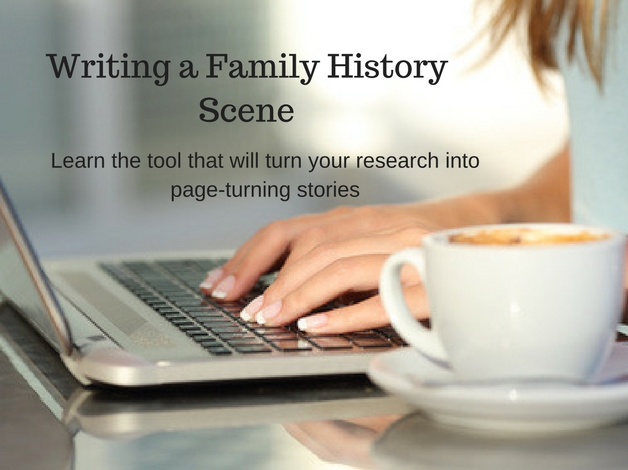In this week’s video, we delve into the art of bringing your ancestor’s voice to life on the page. Join us as we unravel the intricate elements that writers employ to craft a character’s unique voice. Don’t miss this opportunity to enhance your narrative skills and infuse your characters with depth and authenticity. Tune in for a masterclass on character voice creation that will elevate your writing to new heights!
How to Bring Your Ancestor’s Unique Voice to the Page
3 thought on “How to Bring Your Ancestor’s Unique Voice to the Page”
Comments are closed.
Related Post

How to Show Instead of Tell: A Writing LessonHow to Show Instead of Tell: A Writing Lesson
“Writing in scenes represents the difference between showing and telling. The lazy, uninspired writer will tell the reader about a subject, place or personality, but the creative non-fiction writer will show that subject, place or personality, vividly, memorably-and in action, in scenes.
Lee Gutkind, You Can’t Make Stuff Up
Writers are told all the time to show not tell. What does that exactly mean? How does that apply to narrative nonfiction and specifically family history stories?
Narrative nonfiction is comprised of summary and scenes. Simply put, summary is telling, and scenes are showing. To show in nonfiction, we must include scenes and not just summary. Your family history stories are likely boring because you are only using summary, you are only telling. To make your stories entertaining and compelling, so that they read like a good book you must embrace scenes. Scenes are the half of the nonfiction equation that brings a family history story to life.
What is a family history scene?
In the case of family history, a scene recreates an event or an experience for the reader from your ancestor’s life. For example, getting on a ship to America, voting for the first time, giving birth, getting married, proposing to a future spouse or signing documents to own their first land.
These scenes are recreated from details pulled from a document, a picture, a diary, a letter. Maybe details are derived from a newspaper article, or an interview or a recalled conversation. These scenes might rely on social, local, regional or world history to help recreate them on the page. You’ll likely require a combination of these sources to bring a scene to the page.
A scene shows the action in real time. The reader is placed immediately in the event as if it is playing out before our eyes. A scene is filled with description, detail and dialogue, necessary to bring the scene to life. The more specific you can be the more real it becomes for the reader.
Jumping into writing scenes can be overwhelming for new writers. The best place to start is by learning to show, one sentence at a time.
Examples
Telling
Tom walked every Sunday to church.
Showing
Tom strolled along the dusty road to church, adorned in his freshly pressed Sunday shirt, the starch collar scratching at his neck.
Telling
Grandma baked a pie.
Showing
The cinnamon apple pie cooled on the kitchen window sill, the golden crust glistened, and the sweet smell surrounded Grandma’s house as we ran through the front door.
See the difference. In the showing examples, above we get a vivid picture that we can imagine in our mind’s eye the setting and action. It gives us the feeling of being there and experiencing it for ourselves.
3 Steps to Start Showing in Your Ancestor’s Stories
- Use strong active verbs. I could have used “Tom walked” but the verb ‘stroll’ conjures up a more specific image. I could have used hustled, or ambled or skipped, all would have provided a clear picture of Tom and his actions.
- Use specific nouns and precise adjectives in descriptions that paint a picture for the reader. For example, Grandma’s pie on the windowsill paints a very clear picture. It’s not just a pie but a cinnamon apple pie. Be specific in your details and descriptions.
- Use Sensory Details. – Don’t just tell us how something looked, show us how it looked, smelled, sounded, tasted and felt. Use all your senses, of course not all in the same sentence. We not only see Tom in his freshly pressed shirt, but we feel it scratching. And of course, we smell Grandma’s pie as we approached the house.
Start practising showing in your family history stories by using these three steps to start transforming your sentences into showing sentence instead of telling sentences.
Want to learn how to build a scene and connect them into a story, consider workbook #4 in the Write Your Family History series. Crafting a Scene, Showing Your Ancestors in Action walks you through building scenes and connecting those scenes into a complete story. Or consider our upcoming course Writing a Family History Scene and get hands on practise building and writing scenes. This course will transform your writing.

How to Write a SceneHow to Write a Scene
We think in scenes all the time.
Take a moment, remember a childhood memory or last week’s business meeting or playing with your children last night, or the family dinner on Sunday evening. These scenes play out like little movies in your head. There are characters, and in a place, a time, and something is happening, conversations are had. As the writer, you are the director re-creating the moments of your ancestor’s life in words, like a movie, vivid, colourful, playing out for the reader on the page.
All scenes contain various elements that contribute to making the scene alive and vibrant for the reader. Let’s break a scene down to see what makes it so special.
The Elements of a Good Scene
Time – The reader should be thrust into a specific time and day, so the reader is immediately oriented with the time frame of the scene. If you don’t your reader is quickly confused and lost.
Setting – Again, much like time you also want to familiarize your reader quickly into the place of your scene. In order for the reader to see the scene play out they need to understand the surroundings and be able to place your ancestor within their surroundings.
Action – Something happens in the scene that propels the plotline forward. Your scenes must have action; they must bring about conflict.
Dialogue – Someone speaks. Dialogue can reveal plot, the conflicts but also helps us understand our ancestor’s character.
Vivid Description- In order for your reader, to see the scene play out like a movie it must have very specific and detailed description.
Imagery – To bring the scene to life, the writer must use all their senses, touch, taste, sight, smell, and hearing. However, don’t overload your scene. As the writer, you must decide what you want to bring through in your writing. Don’t pile up your writing with description and imagery and let the reader try to figure it out.
POV- The reader needs to have a clear understanding of who is speaking.
Figurative Language- Similes and metaphors are often used to help create visual images for the reader. It helps to create images for the reader, to make your writing more memorable.
Beginning, Middle and End – Just like our story each scene needs a beginning, middle and end. The end needs to propel us on in the story to the next scene. The beginning draws us in, the middle gives us the guts of the scene, the conflict, the end offers a resolution or not but offers up tension that propels the reader on to the next scene.
Purpose – A scene must serve the story. It must somehow be relevant to the goal of your ancestor. If it does not serve the goal of your ancestor, it has no reason to be in the story.
You want your scenes to be entertaining. This is another one of those moments when you will have to tap into the creative side of your brain. You have to breathe some spirit into a scene. How do we do that? Again this comes from practice and time and by reading the works of other great authors and learning from them, recognize how they craft scenes and practice writing scenes of your own.
 Coming in September!
Coming in September!
[button url=”https://www.familyhistorywritingstudio.com/course/writing-the-family-history-scene/” class=”green” bg=”” hover_bg=”” size=”0px” color=”” radius=”0px” width=”0px” height=”0px” target=”_self”] Join Our Class [/button]
This is so informative and helpful
Thank you so much
This was simple but included things I had not even considered – very helpful!
I missed this epiosode and enjoyed hearing it. Was there a syllabus for this presentation.
Thank you,
Shirley Mack